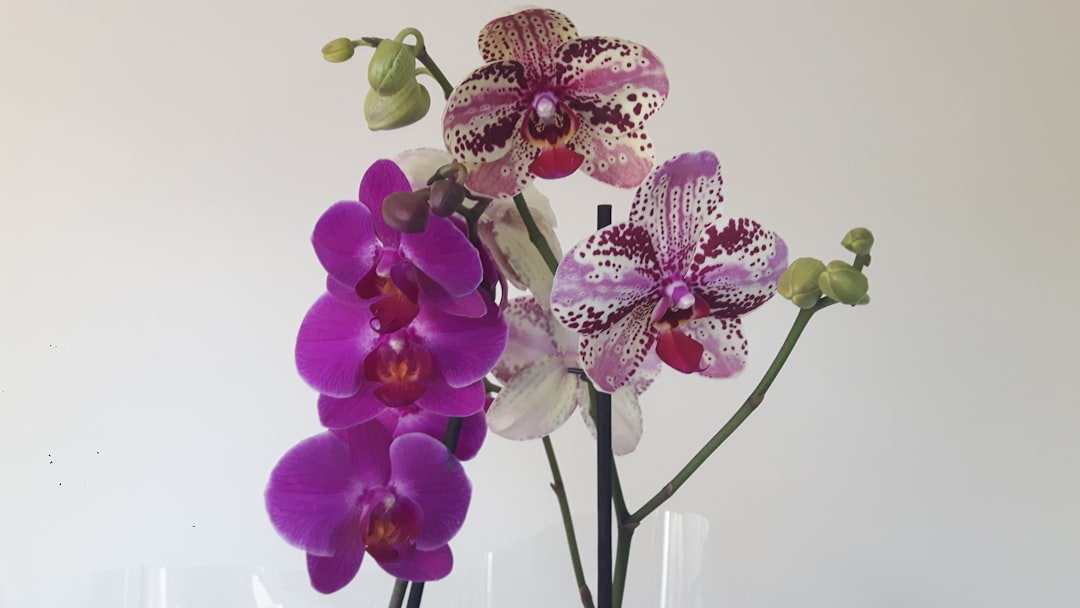Unveiling the Beauty of Hollyhocks in Your Garden

When it comes to adding a touch of vertical elegance and a burst of color to your garden, few plants can rival the charm of hollyhocks. These perennials are not only a delight to the eyes but also relatively easy to grow, making them a popular choice among gardeners of all skill levels.
Hollyhocks, scientifically known as Alcea rosea, are native to Asia and Europe. They have been cultivated for centuries for their showy flowers that come in a wide range of colors, including pink, red, purple, yellow, and white. The tall, spiky flower stalks can reach heights of up to 8 feet, creating a dramatic focal point in any garden.
One of the great things about hollyhocks is that they are relatively low - maintenance. They prefer full sun, which means they should be planted in an area of your garden that receives at least 6 hours of direct sunlight per day. However, they can tolerate some light shade, especially in hot climates. The soil should be well - drained, fertile, and rich in organic matter. You can improve the soil quality by adding compost or well - rotted manure before planting.
There are two main ways to grow hollyhocks: from seeds or from seedlings. If you choose to grow them from seeds, you can start them indoors about 6 - 8 weeks before the last frost date in your area. Fill a seed tray with a good quality seed - starting mix, moisten it, and then sow the seeds on the surface. Cover the seeds lightly with a thin layer of the mix and keep the tray in a warm, bright place. The seeds usually germinate within 7 - 14 days.
Once the seedlings have developed a few sets of true leaves, you can transplant them into individual pots. Harden them off gradually by exposing them to outdoor conditions for a few hours each day over the course of a week. Then, when all danger of frost has passed, you can plant them in your garden at a spacing of about 18 - 24 inches apart.
If you prefer to skip the indoor seed - starting process, you can also sow the hollyhock seeds directly in the garden in the spring or fall. Make shallow furrows in the soil, about 1/4 inch deep, and space the seeds about 6 inches apart. Cover the seeds with soil and water gently. Keep the soil moist until the seeds germinate.
Watering is an important aspect of hollyhock care. During the growing season, water the plants regularly, especially during dry spells. However, be careful not to over - water, as hollyhocks do not like soggy soil. A good rule of thumb is to water deeply once a week, allowing the soil to dry out slightly between waterings.
Fertilizing your hollyhocks can help them grow strong and produce more flowers. You can use a balanced, slow - release fertilizer in the spring when new growth begins. Follow the instructions on the fertilizer package for the correct application rate. Additionally, you can side - dress the plants with compost or well - rotted manure throughout the growing season to provide them with a steady supply of nutrients.
One of the main pests that can affect hollyhocks is the hollyhock rust, a fungal disease that causes orange or brown spots on the leaves. To prevent rust, make sure to provide good air circulation around the plants by spacing them properly. Remove any infected leaves as soon as you notice them and dispose of them in the trash, not in the compost pile. You can also apply a fungicide as a preventive measure, following the instructions on the product label.
Another potential pest is the aphid. These small, soft - bodied insects can suck the sap from the plants, causing stunted growth and distorted leaves. You can control aphids by spraying the plants with a strong stream of water to knock them off or by using an insecticidal soap or neem oil. Be sure to follow the safety precautions when using any pesticides.
Hollyhocks are also great for attracting pollinators such as bees and butterflies to your garden. The large, colorful flowers provide a rich source of nectar, making them a favorite among these beneficial insects. By growing hollyhocks, you are not only adding beauty to your garden but also supporting the local ecosystem.
In conclusion, growing hollyhocks in your garden is a rewarding experience. With their tall, stately flower stalks and vibrant colors, they can transform any outdoor space into a floral paradise. By following the simple steps outlined above, you can enjoy these lovely perennials year after year.